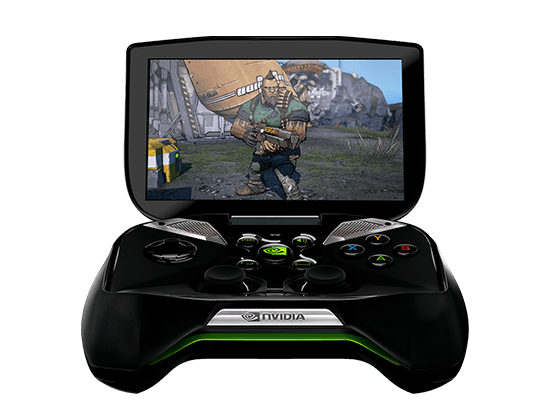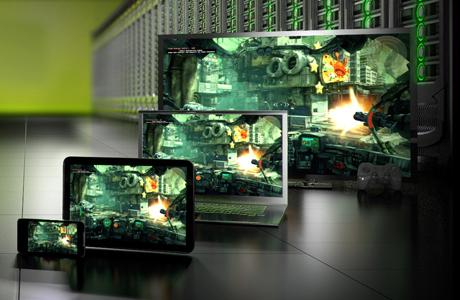Nvidia kicked off its appearance at this year’s Consumer Electronics Show (CES) in Las Vegas with a renamed-and-refreshed GeForce Grid, a cloud-gaming platform which several gaming companies will apparently support. The platform, now known as the Nvidia Grid, is a server capable of supporting up to 24 racks, with 20 grid servers per rack. The Grid contains 240 Nvidia GPUs for a total of 200 teraflops—the equivalent of 700 Microsoft Xbox 360 game consoles, Nvidia chief executive officer Jen-Hsun Huang said during a Jan. 6 press conference. Nvidia also announced the Tegra 4 microprocessor, the next generation processor that will power upcoming tablets, and an unexpected surprise: “Project Shield,” a PlayStation Vita-like portable handheld that will serve both as an Android gaming tablet as well as a means to play PC games on a big-screen TV—provided you have an Nvidia GPU powering your PC, of course. GPUs have been used in specialized applications within the data center for several years, after Nvidia began promoting its CUDA design language as a means to control its GeForce graphics processors as specialized coprocessors. GPUs began life as little more than specialized DSPs, designed to perform repetitive calculations faster and more efficiently than their general-purpose CPU cousins. Recently, however, companies such as OnLive have attempted to put modern gaming systems in the cloud by building specialized PC racks in remote servers, then optimizing low-latency connections to the client. OnLive is barely hanging on after a disastrous reorganization; arch-rival Gaikai, however, was purchased by Sony. While Gaikai signed on as a user of the original GeForce Grid, Nvidia made no mention of the company this time around. “As we're able to access broadband literally in everybody's home, the accessibility of cloud computing because better than ever,” Huang said. Each node within Nvidia’s Grid can support 24 users.
Tegra 4 and Project Shield
As widely expected, Nvidia also announced the Tegra 4, a chip that contains 72 GPU cores, four A15 CPU cores, and an integrated 4G LTE modem. The new Tegra 4 chip is both faster than the Apple A6X (currently found inside the iPad 4) as well as the Samsung Exynos within the Nexus 10 tablet, at least according to Huang. Project Shield is an interesting take on local and remote computing; the Tegra 4-based console looks like a gaming controller with a small 5-inch, 720p touchscreen tacked on. Huang said that it includes 38-watt-hour batteries: good for about 5-10 hours of gaming or 20-odd hours of HD video. Unfortunately, Huang didn’t announce either a price or ship date for Project Shield. The interesting thing is that the Shield can apparently be connected to a PC powered by a GeForce GTX, using that GPU to render the game, which is then streamed over a local network to the TV. A variety of local games appeared to work with the system, and the Shield controller also connects to Steam, too. Not quite cloud gaming, but a novel twist on it. [caption id="attachment_6952" align="aligncenter" width="550"]

Project Shield[/caption]
Images: Nvidia  Project Shield[/caption] Images: Nvidia
Project Shield[/caption] Images: Nvidia 
